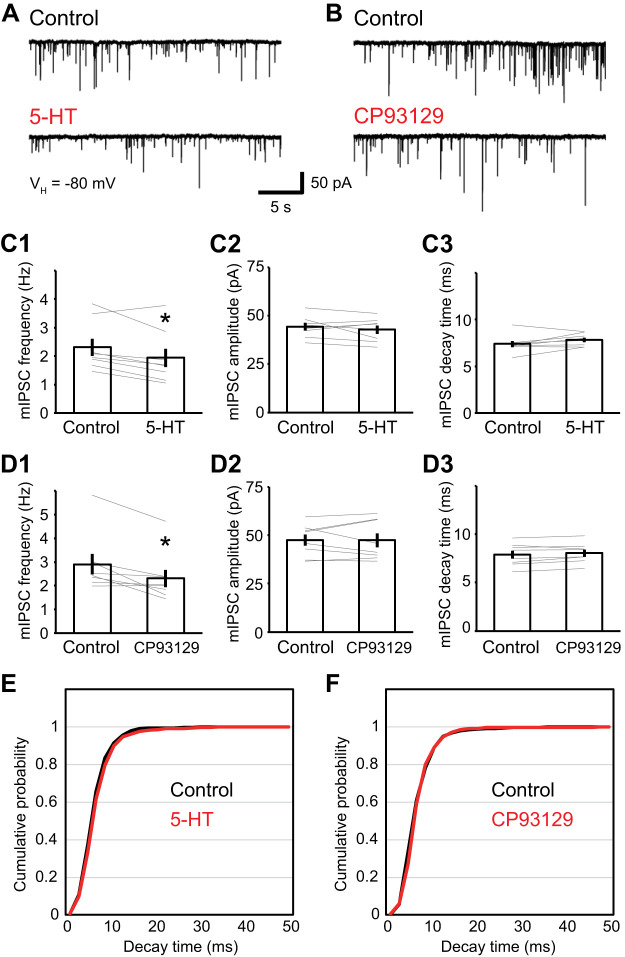Fig. 4.
Effect of 5-HT on GABAA miniature inhibitory postsynaptic currents (mIPSCs). Recordings were performed in the presence of TTX (1 µM), CNQX (10 µM), dl-APV (50 µM), and CGP55845 (1 µM). A and B: representative traces of mIPSCs before (top) and after (bottom) 5-HT (5 µM; A) or CP93129 (5 µM; B) application. VH, holding potential. C1–3: 5-HT reduced the frequency of mIPSC (C1; from 2.3 ± 0.3 Hz to 1.9 ± 0.3 Hz; paired t test; df = 7; t = 3.01; P = 0.020; n = 8) but did not alter their amplitude (C2; from 44.2 ± 2.0 pA to 42.7 ± 2.1 pA; paired t test; df = 7; t = 0.98; P = 0.362; n = 8) and decay time of mIPSC (C3; from 7.4 ± 0.3 ms to 7.8 ± 0.2 ms; paired t test; df = 7; t = −1.89; P = 0.100; n = 8). D1–3: CP93129 reduced the frequency of mIPSC (D1; from 2.9 ± 0.4 Hz to 2.3 ± 0.4 Hz; paired t test; df = 7; t = 3.32; P = 0.013; n = 8) but did not alter their amplitude (D2; from 47.4 ± 2.9 to 47.4 ± 3.6 pA; paired t test; df = 7; t = 0.02; P = 0.982; n = 8) and decay time of mIPSC (D3; from 7.9 ± 0.4 to 8.0 ± 0.4 ms; paired t test; df = 7; t = −1.53; P = 0.169; n = 8). E and F: cumulative probability distribution of the decay time of mIPSCs in control conditions (black) and after application (red) of 5-HT (E) or CP93129 (F). *P < 0.05.

